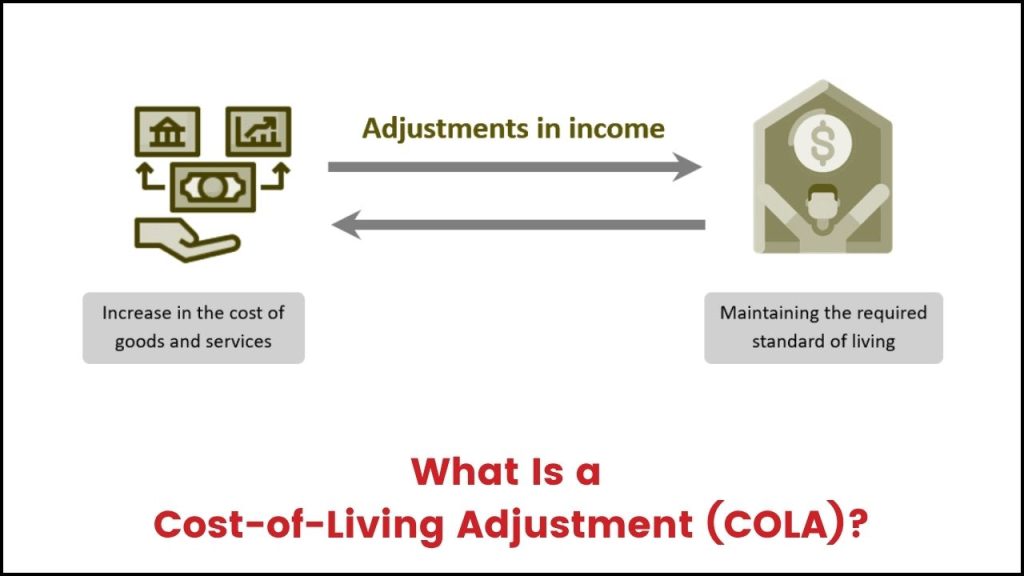Social Security COLA Warning is the topic on everyone’s minds as the Cost-of-Living Adjustment (COLA) for 2025 rolls out. This yearly adjustment to Social Security benefits aims to help retirees keep up with inflation by increasing their monthly payments. However, experts increasingly warn that despite these annual bumps, many retirees may actually face a “lose-lose” scenario where the increases fail to keep pace with real costs, particularly healthcare and housing, thus eroding their purchasing power over time.

Understanding how COLA works, the economic realities facing retirees, and practical steps to manage these changes can empower retirees and their families to plan effectively for financial stability in retirement.
Social Security COLA Warning
| Topic | Details |
|---|---|
| 2025 COLA Increase | 2.5% increase in Social Security benefits starting January 2025 |
| Average Monthly Bump | Approximately $46 to $57 more per month (~$552 to $684 annually) |
| Inflation Used for COLA | Based on Consumer Price Index for Urban Wage Earners and Clerical Workers (CPI-W) |
| Rising Costs Impacting Retirees | Healthcare, housing, and utilities inflation rising faster than general CPI |
| Medicare Premium Impact | Medicare Part B premiums increase offset COLA gains (e.g., +$10 in 2025) |
| Legislative Changes | Repeal of Windfall Elimination Provision (WEP) and Government Pension Offset (GPO) for better benefits |
| Earnings Limits for Working Retirees | Increased to $23,400 for those under Full Retirement Age, affecting benefits if exceeded |
The Social Security COLA for 2025, though designed to help retirees keep up with inflation, presents a mixed picture. The announced 2.5% increase, while providing some relief, often falls short of covering the true rising costs faced by retirees, especially for healthcare. Additionally, Medicare premium hikes and earnings limits complicate the financial landscape for many seniors. Understanding how COLA works and taking proactive steps to manage expenses and income is crucial for navigating retirement successfully.
What is Social Security COLA?
Cost-of-Living Adjustment (COLA) is an annual increase in Social Security benefits designed to protect retirees from inflation—the general rise in prices for goods and services over time. The Social Security Administration (SSA) calculates this increase based on inflation data from a special index called the Consumer Price Index for Urban Wage Earners and Clerical Workers (CPI-W).

For 2025, the SSA announced a 2.5% COLA increase. This means that if a retiree was receiving $1,850 per month in 2024, their monthly benefits would rise to roughly $1,896 in 2025—an increase of about $46. This adjustment helps retirees with everyday expenses like food, utilities, and transportation that tend to get more expensive each year.
Why Experts Say It’s a Lose-Lose Situation for Retirees
1. COLA Often Lags Behind True Inflation
While COLA is meant to help retirees keep pace with inflation, many experts argue that the measure isn’t perfect. Since it is based on CPI-W, it doesn’t fully capture the specific spending patterns of retirees. For instance, healthcare, housing, and utility costs often rise faster than the average inflation rate, meaning retirees end up spending more, but their benefits don’t increase enough to cover those extra costs.
2. Healthcare Costs Are Rising Faster Than COLA
Most retirees rely heavily on healthcare, which has been consistently inflating at a rate higher than general inflation. The increase in Medicare Part B premiums—an essential health insurance cost deducted from Social Security benefits—further eats into any COLA gains. For example, in 2025, Medicare Part B premiums will increase by about $10, reducing the net benefit increase retirees receive from their COLA.
3. Modest COLA Increases May Not Cover Daily Essentials
The typical COLA increase in recent years has ranged between 2.5% and 3.2%, which translates to an average monthly bump of about $50. While helpful, this modest increase is often not enough to cover the more rapid price increases in items retirees must buy daily, like groceries and medicine. Over time, these small gaps can add up, reducing retirees’ purchasing power.
4. Earnings Limits Affect Retirees Still Working
For retirees who continue working while collecting benefits, there are earnings limits that can reduce their Social Security payments if they make above a certain threshold ($23,400 in 2025). This can mean less income overall for those who depend on both retirement benefits and wages from part-time work.
Detailed Guide: Understanding and Navigating Social Security COLA for Retirees
Step 1: Know How Your COLA is Calculated
- The SSA compares average prices during a specific period (Q3 of the current year) to the same period the previous year using the CPI-W.
- If prices increase, SSA applies the COLA percentage increase to your monthly benefits for the next year.
Step 2: Assess Your Expenses vs. COLA Increase
- Track your annual expenses, especially in healthcare, housing, and utilities.
- Compare your COLA increase to how much more you actually spend each year to see if you are keeping pace.
Step 3: Factor in Medicare Premiums
- Be aware of Medicare Part B premium increases that reduce your net Social Security benefit.
- For 2025, plan for a $10 increase in Part B premiums, which may offset your cost-of-living increase.
Step 4: Consider the Impact of Working While Receiving Benefits
- If you work before reaching your full retirement age, know the earnings limit ($23,400 in 2025).
- Earn more than the limit, and your benefits may be reduced, impacting your overall retirement income.
Step 5: Explore Alternative Income and Cost-Saving Strategies
- Consider supplemental retirement income sources such as pensions, investments, or part-time work.
- Reduce living expenses by budgeting carefully, especially on healthcare and housing costs.
Step 6: Stay Informed About Legislative Changes
- Keep an eye on laws affecting Social Security, like the repeal of the Windfall Elimination Provision and Government Pension Offset, which impact some retirees in public service.
- Legislative changes may affect your benefits positively or negatively in the long run.
Practical Advice for Retirees
- Budget Realistically: Don’t rely solely on the COLA increase to cover rising costs; factor in the faster inflation in healthcare and housing.
- Monitor Healthcare Costs: Work with your Medicare provider to understand premium costs and explore supplemental insurance options.
- Plan Your Work and Earnings: If you work, calculate how your earnings might affect your Social Security benefits.
- Consult Financial Advisors: Professional advice can help you make the best choices regarding the timing and management of Social Security and retirement funds.
2026 Social Security COLA Could Surprise Everyone — But There’s One Big Catch
Social Security 2026 COLA Forecast Revealed — What It Means for You and How to Prepare
Social Security Payments Arrive August 27 – But Some Could See Their Benefits Slashed in Half
FAQs About Social Security COLA Warning
Q1: What is the average Social Security COLA for 2025?
The 2025 COLA is estimated to be around 2.5%, translating to an average increase of approximately $46-$57 per month for retirees.
Q2: Why doesn’t COLA keep up with retiree expenses?
COLA is based on the CPI-W index that focuses on urban workers’ expenses and does not fully account for seniors’ higher costs of healthcare, housing, and utilities.
Q3: How do Medicare premiums impact Social Security benefits?
Medicare Part B premiums are deducted from Social Security checks, so an increase in premiums can reduce the net amount retirees receive even if they get a COLA increase.
Q4: What can retirees do if COLA isn’t enough?
Retirees should budget carefully, look for supplemental income sources, consider cost-saving measures, and consult with financial experts.





